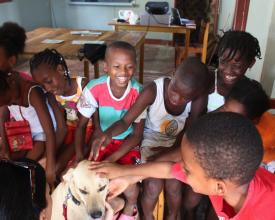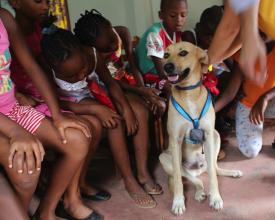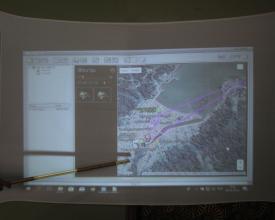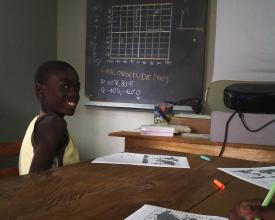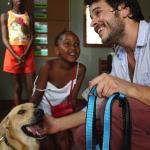
Arribada Clubs
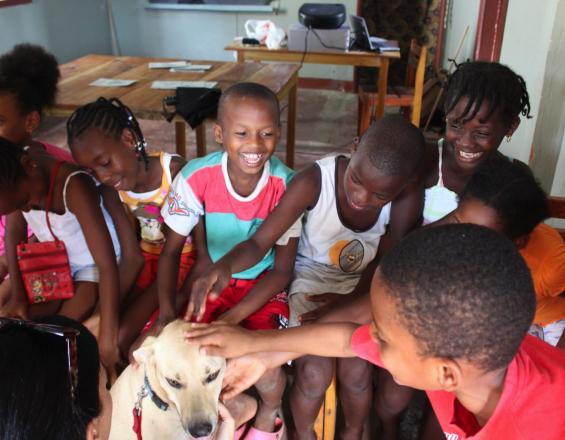
The Arribada Club, integrates STEM education with conservation technology to empower underserved communities to understand and protect their local natural environment. Through after-school programs in Príncipe (São Tomé and Príncipe), Maio (Cape Verde), and Laikipia (Kenya), children aged 10-12 learn basics in IT, programming, and engineering, then apply those skills and concepts to explore the workings of locally-relevant conservation technologies. Our students use GPS concepts, programming skills, 3D printers, 3D scanners, and micro-computers to understand various conservation devices. We collaborate with local NGOs to develop each Club’s curriculum, ensuring they align with local conservation needs such as habitat loss, biodiversity awareness, or species protection. Since 2017, over 750 students have participated, with measurable outcomes in digital literacy and environmental knowledge, and more than half completing the 3-year program. The Club fosters community-driven conservation, with a globally-replicable model.
Context
Challenges addressed
The Arribada Club addresses critical, social, environmental, and economic challenges underserved communities face. Socially, the program combats a significant lack of technical capacity by introducing students to digital literacy and STEM subjects that are essential in today’s world. The Club directly applies these subjects to environmental conservation, fostering students’ appreciation for nature and its importance while preparing them for careers as conservationists. Economically, The Arribada Club tackles unemployment and poverty by equipping the next generation with STEM skills that can lead to job opportunities in conservation and beyond. Additionally, the program addresses infrastructure development by deploying and maintaining otherwise inaccessible technology (such as laptops, 3D printers, and GPS devices) within these communities. By bridging the digital divide, the Arribada Club empowers students to contribute to their communities and engage in conservation efforts, fostering both individual and societal growth.
Location
Process
Summary of the process
The Arribada Club combines foundational STEM teaching, hands-on technology use, and strong community partnerships to create a holistic and impactful conservation education program. The Club’s focus on basic IT, programming, and engineering concepts gives students an excellent STEM foundation. This is complemented by integrating conservation technology in STEM curricula, which equips students with hands-on experience with tools like GPS, 3D printers, and microcomputers to tackle real-world environmental challenges. Using community partnerships for local impact, we ensure that the program is deeply embedded in the community, benefits from the expertise and support of local NGOs and educational departments, and aligns with locally relevant conservation needs. These three building blocks combine to foster an understanding and appreciation of nature that leads to sustainable community-driven conservation. Together, these Building Blocks enable a seamless flow from planning to implementation, ensuring that students gain technical skills while fostering a commitment to conservation. By connecting education, technology, and local partnerships, the program delivers measurable conservation and social outcomes.
Building Blocks
Empowering Local Youth as Conservation Stewards
The Arribada Club provides hands-on STEM education tailored to conservation needs. Delivered through after-school programs in underserved communities, the curriculum incorporates local conservation challenges into lessons, fostering a deep connection between students and their environment. Students gain practical experience with tools like GPS, microcomputers, and bioacoustic monitoring, learning how these technologies support biodiversity conservation. This education empowers local youth with technical skills essential for both personal and community growth while fostering future conservation leaders.
Enabling factors
Key enabling factors include partnerships with local NGOs (e.g., Fundação Príncipe, Fundação Maio Biodiversidade, Ol Pejeta Conservancy) and alignment with educational departments. Access to affordable technology, such as laptops, microkits, and 3D printers, is critical. Support from donors like the Earth Ranger Tech Award has facilitated scaling and technology deployment, ensuring students have the tools to succeed.
Lesson learned
Early involvement of local partners is vital for ensuring the curriculum reflects the community’s conservation priorities. Establishing a consistent funding source ensures the sustainability of clubs. Iterative feedback from students and teachers allows continuous curriculum improvement, enhancing relevance and impact.
Hands-On Conservation Tech in STEM Learning
The Arribada Clubs integrate conservation technology into their STEM curriculum to teach students practical applications for environmental monitoring and problem-solving. Students learn GPS mapping, bioacoustic data analysis, microcomputer programming, and 3D printing to address conservation challenges. They design prototypes, analyze biodiversity data, and create digital libraries of natural specimens using 3D scanning, directly applying their learning to conservation efforts.
Enabling factors
Reliable access to modern technology like 3D printers and GPS devices enables hands-on learning. Teacher training ensures effective curriculum delivery. Collaboration with conservation NGOs allows the integration of real-world conservation needs, making lessons immediately applicable and meaningful to the students’ local environment.
Lesson learned
Maintaining technology and providing ongoing teacher support are crucial for program success. Encouraging students to work on community-relevant projects boosts engagement and demonstrates the real-world value of their education. Balancing technology use with foundational STEM principles ensures students build robust, transferable skills.
Co-Designing Education with Local NGOs and Schools
Strong partnerships with local NGOs and educational departments have been critical to the success of the Arribada Clubs. These partnerships enable the customization of the curriculum to reflect community-specific conservation priorities, such as sea turtle protection in Príncipe or biodiversity monitoring in Kenya. Collaborative planning ensures that the clubs address local needs and have a lasting impact.
Enabling factors
Effective partnerships rely on mutual trust and shared goals. Local NGOs contribute expertise and contextual knowledge, while educational departments facilitate integration into schools. Recognition from awards, such as the Earth Ranger Tech Award, strengthens partnerships by validating the program’s impact.
Lesson learned
Building and maintaining partnerships require clear communication and shared ownership of goals. Regular collaboration with partners helps align objectives and resources, ensuring the program remains relevant and impactful. A focus on long-term relationships fosters program sustainability and scalability.
Building STEM Foundations for Digital Literacy
The Arribada Club teaches students fundamentals of IT technology, computer programming, and design engineering throughout the curriculum. It also teaches scientific concepts behind many conservation technologies, such as how GPS systems work.
Enabling factors
Key enabling factors include access to basic digital tools, such as laptops, and training resources tailored to students with no prior STEM experience. Local educators, trained and mentored by the Arribada team, are central to delivering consistent and locally relevant instruction.
Lesson learned
Training educators is essential—not only in technical skills, but in how to translate them into engaging, age-appropriate lessons. We've learned that providing consistent mentorship to teachers leads to better outcomes. Hands-on materials (e.g., laptops, micro:bits, GPS loggers) must be maintained locally, which requires basic IT support systems. Starting with simple, high-impact activities helps build confidence in both students and teachers.
Impacts
The Arribada Club has delivered measurable social, economic, and environmental impacts. Socially, 60% of our students report never having used a computer before joining. With formal computer classes scarce or poorly equipped, the Clubs are often the only place where students gain real digital skills. Since 2017, we've reached 750+ students and delivered 2,500+ classes. Participation is free, and over half of students (54% girls, 46% boys) complete the full 3-year program (Year 1: 73%, Year 2: 85%, Year 3: 86%). Economically, the Clubs build skills that increase employability, especially in conservation sectors. Environmentally, students apply GPS, bioacoustics, and 3D design to address local biodiversity challenges. Outcomes include prototype tools, digital biodiversity replicas, and enhanced awareness of species and habitat threats.
The Solution contributes to GBF Target 4 by engaging youth in hands-on biodiversity monitoring and education, including raising awareness of the IUCN Red List and its categories. It aligns with GBF Target 20 by building long-term capacity in conservation technology and digital literacy among underserved groups, addressing a persistent gap in access to scientific knowledge and tools. The program strengthens local capacity not only for biodiversity protection, but for sustaining environmental responsibility through community-based education and technology transfer.
Beneficiaries
Primary beneficiaries are 750+ students in Príncipe, Maio, and Laikipia, gaining essential STEM skills. Secondary beneficiaries include local teachers who are employed and trained, as well as NGOs and communities benefiting from increased conservation awarenes
Additionally, explain the scalability potential of your Solution. Can it be replicated or expanded to other regions or ecosystem?
The Arribada Club is highly replicable. Its adaptable curriculum and accessible technology allow expansion to new regions. Partnerships with local NGOs and schools ensure integration into diverse contexts, making it scalable to other communities with conservation challenges.
Global Biodiversity Framework (GBF)
Sustainable Development Goals
Story
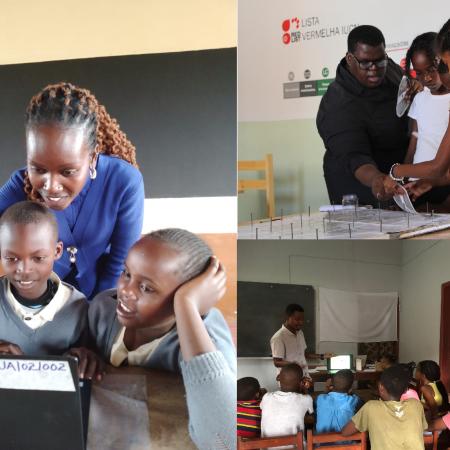
As well as changing students’ lives and futures, The Arribada Club also greatly benefits the Clubs’ local, community-member teachers. Milly in Laikipia, Eliezer on Príncipe Island, and Hélder on Maio Island now have paid employment through The Arribada Club. They’ve received training in IT, computer science, programming, and conservation technology which are difficult to find in their respective regions. Our lead educator regularly supports their teaching, offering feedback and guidance to help them grow as confident and effective educators. Because the teachers are local, they’ve helped shape their Clubs’ curriculums to community needs, giving them valuable experience developing lessons and curriculums.

